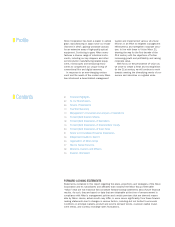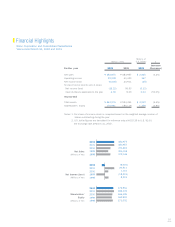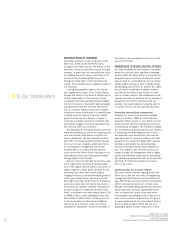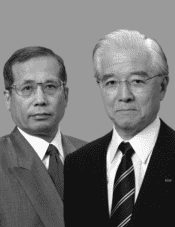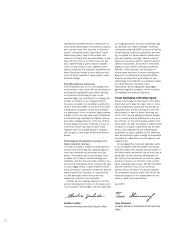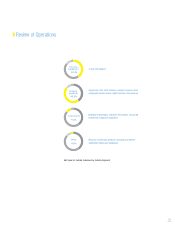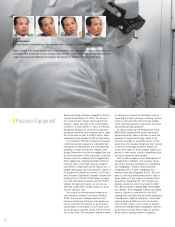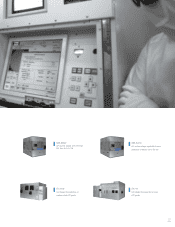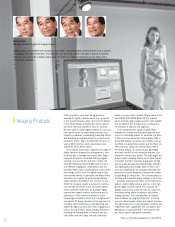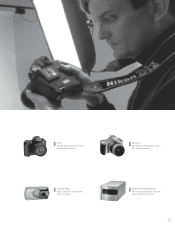Nikon 2002 Annual Report Download - page 12
Download and view the complete annual report
Please find page 12 of the 2002 Nikon annual report below. You can navigate through the pages in the report by either clicking on the pages listed below, or by using the keyword search tool below to find specific information within the annual report.
10
Instruments
Although sales of biological microscopes grew rel-
ative to the previous year, the slump in semicon-
ductor-related markets had severely negative
repercussions for sales of industrial microscopes
and semiconductor inspection equipment.
Overall, sales fell 21.0% year on year to ¥46.6
billion, while operating income plunged 91.0% to
¥0.5 billion.
Sales of biological microscopes benefited from
buoyant demand from the biotechnology research
sector in the United States. The company launched
two new models during the year—the ECLIPSE
TE2000, for research-use inverted microscopy, and
the DIGITAL ECLIPSE C1, modular confocal micro-
scope system. The ECLIPSE TE2000 received high
marks from customers for its functional expand-
ability in a variety of applications, while the DIGITAL
ECLIPSE C1 promises to achieve good sales due
to its specialized optics, which permit the observa-
tion for high-contrast image of intercellular struc-
ture. In industrial microscopes, although we
worked to expand sales of models featuring net-
worked digital cameras, the knock-on effects of
substantially reduced capital investment in the
semiconductor industry had a strongly negative
impact on overall segment sales, particularly in
Japan and the rest of Asia.
In measuring instruments, lower demand for
electronic component resulted in sales falling rel-
ative to the previous year, despite the launch of
the NEXIV VMR computerized numerical control
(CNC) video measuring system.
Sales of semiconductor inspection equipment
also fell as intense promotional efforts linked to
the launch of new models such as the NRM-3000
overlay measuring system and the OPTISTATION-
3100 IC wafer inspection system failed to offset
reduced demand following the slump in the
broader market. Nikon expects sales of process
management and inspection equipment designed
to handle 300-mm IC wafers to contribute to ris-
ing sales within this fiscal year as semiconductor
production revives.
In other areas, Nikon is developing a new pro-
jector-related business by leveraging its expertise
in the science of optical and alignment technolo-
gies to develop an optics engine for reflective-
type LCD projectors.
The company aims to further establish its
measuring and inspection equipment business as
semiconductor-related demand grows, both as a
result of a recovery in chip production levels and
of moves by customers to switch to new technolo-
gy. In microscopes, Nikon plans to capitalize on
its expertise in digital imaging and networked sys-
tem products to expand sales in the field of
advanced research. In the year ended March
2002, the company established a new sales and
marketing subsidiary in Europe, Nikon
Instruments Europe B.V. Moves to reorganize the
global sales network remain ongoing—for
instance, Nikon is looking to build a sales system
in the Chinese market. The company continues to
focus on a variety of business development initia-
tives to insulate its operations better from the
effects of the economic cycle.
Takashi Tamori
Executive Officer, President of Instruments Company
The life sciences field promises accelerated development opportunities as medical and biochemical applications
expand. Nikon’s advanced technical expertise in biological microscopes is also broadening the company’s horizons
steadily. At the start of a new century, Instruments Company’s focus is trained on the ongoing revolution in the
field of microscopy.


